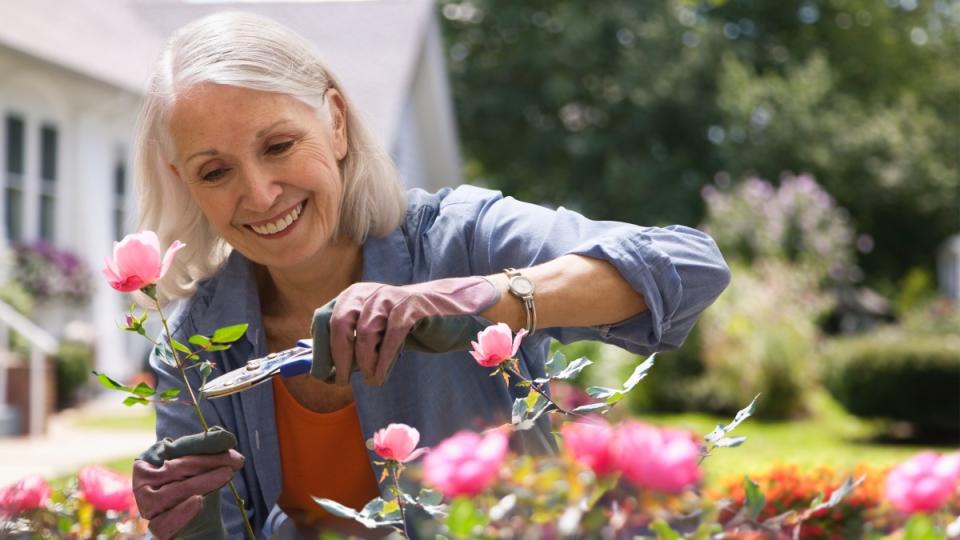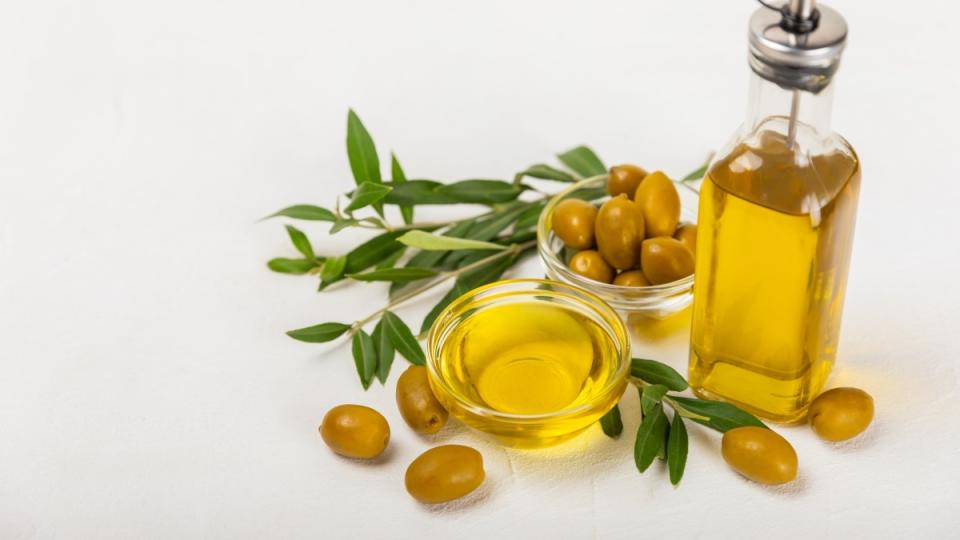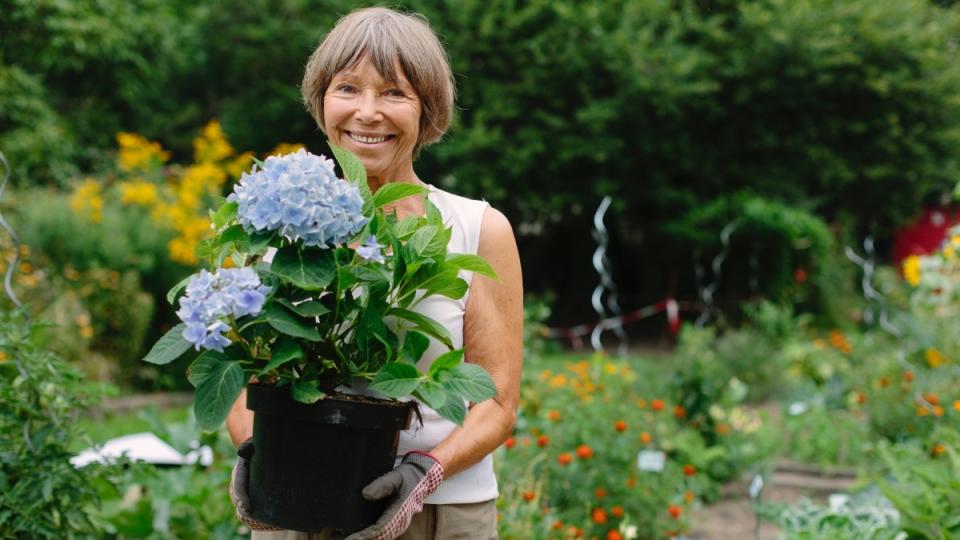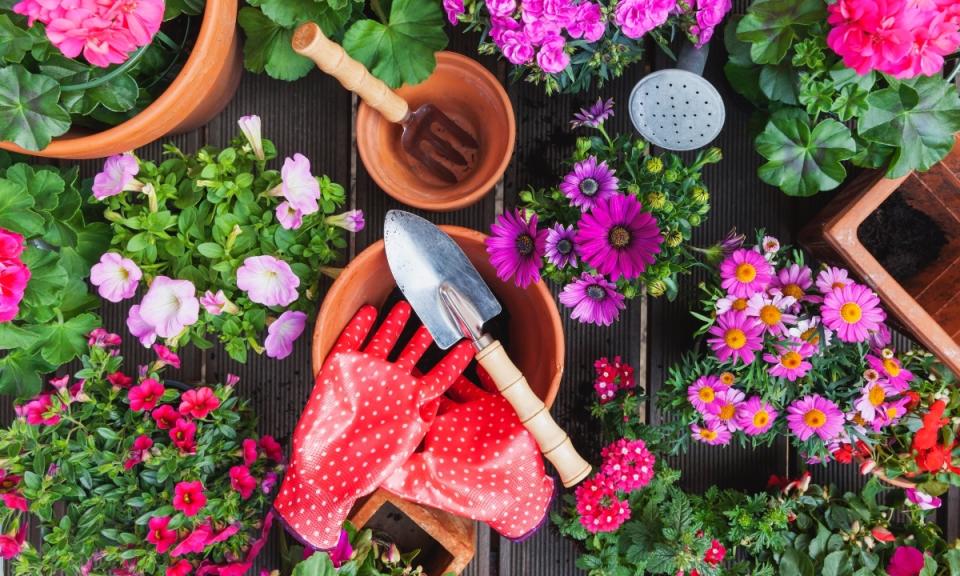Channeling Elvis Before Gardening Prevents Pain + More Hacks That Block Aches Head to Toe
It's no surprise that gardening is incredibly popular: It’s low impact, doesn’t require any special skills and is a proven stress-buster. The hitch? A few hours spent planting and weeding can sometimes trigger pesky musculoskeletal discomfort, especially as we get older. But the good news is that you don't have to give up planting, pruning and potting (or suffer through the aches!). Here, doctors and physical therapists reveal the surprisingly simple tricks that minimize gardening pain so you can stay active all season long.
What causes gardening pain?
Yard work and gardening “involves a lot of repetitive bending and lifting, which can activate muscles that may not be engaged regularly during the day,” explains Alice Chen, MD, a double-board-certified pain management physician and physiatrist at the Hospital for Special Surgery.
These repetitive movements stretch your muscles, tendons and ligaments and compress your joints. When we’re young, that isn’t a big deal. But as we age, these activities can cause wear-and-tear and degenerative damage.

Idler Bonhomme, DPT, MPT, LMT, CLT, a doctor of physical therapy and the owner of FYZICAL Therapy and Balance Centers, compares these age-related effects to repeatedly stretching or pulling on a rubber band. If you aren’t careful, the rubber band eventually breaks. Translation: You don’t want to overdo it. That's why when it comes to gardening pain, prevention really is the best medicine.
Your warm-up: Act like Elvis to block gardening pain
Gardening requires you to move almost every part of your body, including your arms, shoulders, legs, back and neck. Engaging various muscle groups and joints is great for strength and conditioning, but it also ups the odds of aches. Enter the warm-up.
Dr. Bonhomme’s advice: Channel the smooth moves of Elvis Presley. “When it comes to exercise, I typically encourage my patients to do the pelvic tilt. This allows your vertebrae [back bones] to move back and forth, it loosens up your muscles and it mobilizes your joints.”
Since most gardening pain is caused by mobility restrictions, the pelvic tilt is perfect for a pre-yard work routine. Even better? Dr. Bonhomme says the exercise increases the flow of oxygen and nutrient-rich blood to your muscles and joints, helping speed up recovery if you're already achy. Check out the short video below for a how-to:
Prevent gardening pain in your knees
More than 20% of women 50 and older suffer from knee pain. Planting, tilling and weeding typically involve squatting or bending over, which can overwork the knees. Here's how the block knee pain when gardening:
1. Bend at 90 degrees
Small postural changes make a big difference in warding off knee pain. Dr. Chen recommends doing a shallow squat rather than a deep one if you need to get closer to the ground. Bending your knees less than 90 degrees reduces the load on your joints. “This transmits the force [of your movements] to the muscles instead of the joints,” reducing the risk of pain and injury.
Related: Knee Pain When Bending? These 8 MD-Approved Tricks Help End the Ache Naturally
2. Consider a raised garden bed
Worrying about knee pain can keep you out of the garden. Instead of forgoing your favorite hobby, simply scale back on the time spent bending or on your knees.
“Try utilizing a raised garden bed that you can tend without kneeling,” suggests Dallas Reynolds, PT, DPT, COMT, a doctor of physical therapy and the senior director of access management operations at ATI Physical Therapy. “Another great option is purchasing tools that you can use without kneeling, like weed pullers that can operate while standing.” One to try: Corona GT3040 GT 3040 Extendable Handle Weeder.
3. Massage on olive oil
If you have osteoarthritis or another degenerative condition, gardening-related knee pain can be especially bothersome. Olive oil to the rescue! A study in the Indian Journal of Physiotherapy found that topical extra virgin olive oil significantly reduced knee pain in patients with osteoarthritis. It even provided greater pain relief than topical pain relievers. Try massaging a dime-sized dollop of olive oil onto your kneecaps before gardening to reap the rewards. (Discover more ways olive oil and lemon juice boost your health.)

Prevent gardening pain in your back and neck
Weeding, sweeping and raking cause wear-and-tear on the bones and soft tissues in your back and neck. Sometimes, these repetitive motions can also trigger inflammation and cause minor muscle injuries (micro tears). Here's what can help:
1. Don't do the twist
“Try to limit bending and twisting as much as possible,” says Mara Vucich, DO, a board-certified spine specialist at the Maryland Spine Center at Mercy Medical Center in Baltimore. “If you don’t have a hip or knee problem, bend through your hips and knees rather than through your back.”
Likewise, pay attention to your core muscles (the muscles in your abs and lower back). Sweeping and raking can cause you to overextend your core. During these activities, Dr. Vucich says to focus on swinging your arms instead of your entire torso. This helps you maintain good posture and prevents you from throwing your back out. “Controlled motions reduce your risk of injury,” adds Dr. Chen.
2. Lift like this
What do potting soil, mulch and fertilizer have in common? They all come in large bags that need to be carried to your garden, which takes a toll on your back. “Proper lifting technique is extremely important, both to prevent injury and not aggravate existing back pain,” Dr. Reynolds says. His advice:
Stand with your feet shoulder-width apart
Squat down by bending at the hips and knees — avoid bending your back forward
Maintain good posture while lifting
As you return to a standing position, straighten your hips and knees, keeping your back straight
Hold the object as close to your body as you can (near your belt line) to avoid excess strain on the back

3. Keep your neck neutral
Gardening often involves looking down with your neck bent forward. Being in this position for extended periods stresses your muscles, bones and intervertebral discs. To prevent problems, Dr. Chen recommends keeping your neck in a neutral position so it doesn’t jut forward. Positioning your head directly above your shoulders can prevent your muscles and ligaments from working too hard.
Also smart: Adjust your approach to certain activities. For instance, sitting on a gardening stool while pruning a bush prevents you from looking up or down.
Related: Lower Back Pain Self-Care Remedies That Top Docs Use Themselves to Get Relief Fast
Prevent gardening pain in your hands and wrists
Using gardening tools and pulling weeds, takes a toll on your fingers, hands and wrists. After a few hours in the yard, it’s normal to experience cramping and stiffness or blisters and calluses. Here's how to ward off gardening-related hand and wrist pain:
1. Make a T
When we think about stretching, most of us don’t consider our hands. But according to Sahra Esmonde-White, a fitness expert and the co-founder and CEO of the fitness brand Essentrics, we should. “A regular mobility program can increase your range of motion and release all of that tightness and stiffness that comes from gardening,” she says.
Research proves it works. A study in Health Technology Assessment found that people with rheumatoid arthritis who practiced hand exercises for a year experienced significant improvement in their symptoms and had nearly twice as much mobility as those who didn’t.
Esmonde-White recommends this two-phase stretch:
Phase 1
Stand with your feet apart and your arms out to either side with your hands open, like you’re making a T.
Spread your fingers as wide as possible.
When you've spread them to your maximum, try spreading them even more!
Close your fingers tightly together.
Repeat 16 times slowly, then 16 times rapidly.
Phase 2
With palms flat, extend your hands and rotate them within your wrists, drawing a circle.
Repeat slowly, drawing 4 circles in each direction.
This video illustrates similar stretches to prevent hand and finger stiffness:
2. Wear gloves
A good pair of gloves is a gardener’s best friend. Why? Because “using gloves reduces slipping and over-gripping,” Dr. Chen explains. And gloves may be particularly beneficial for folks with arthritis. A study in Muscle and Bone asked participants with arthritis to wear either arthritis or compression gloves for 12 weeks while doing activities like gardening and housework. At the end of the study, 73% of participants said wearing gloves was beneficial. One to try: Copper Compression Half Finger Gloves.
3. Use the right tools
Dr. Reynolds recommends opting for ergonomic gardening tools when possible. “These tools keep your wrist and hand in a neutral position when utilizing them,” he explains. And a neutral position means more comfort and less risk of injury. One to try: 8-Piece Garden Tool Set with Non-Slip Ergonomic Handles.

Mini breaks help thwart gardening pain
The above tips can help keep gardening pain at bay. But to increase their efficacy, take regular breaks. “It’s good to take a break at least every 30 minutes,” Dr. Bonhomme says. “That allows you to get a good amount of work done without overdoing it. When 30 minutes is up, change your position, stretch and get a drink.”
In addition, “take inventory of how you feel,” says Dr. Chen. “The important thing is to know your limits and not overdo the activity.”
For more ways to prevent — and soothe — everyday aches:
What Causes Inside Knee Pain + How Can You Fix It? Experts Share Home Remedies That Actually Work
Lower Back Pain Self-Care Remedies That Top Docs Use Themselves to Get Relief Fast
How to Soothe Plantar Fasciitis Pain Fast: Podiatrist’s Ice Cup Massage Trick + More Home Remedies
This content is not a substitute for professional medical advice or diagnosis. Always consult your physician before pursuing any treatment plan.

